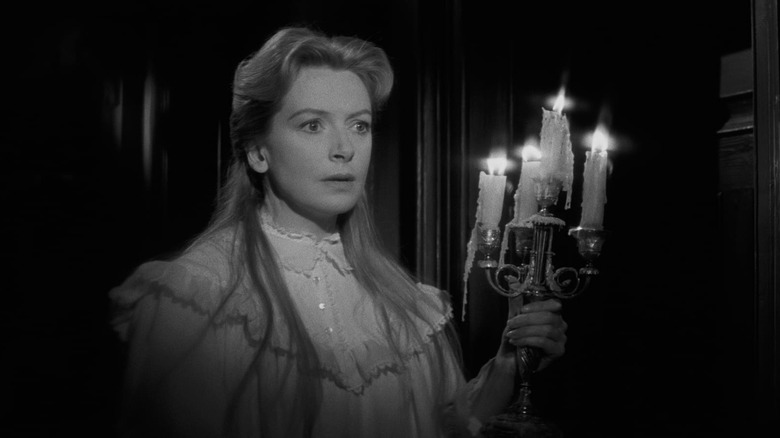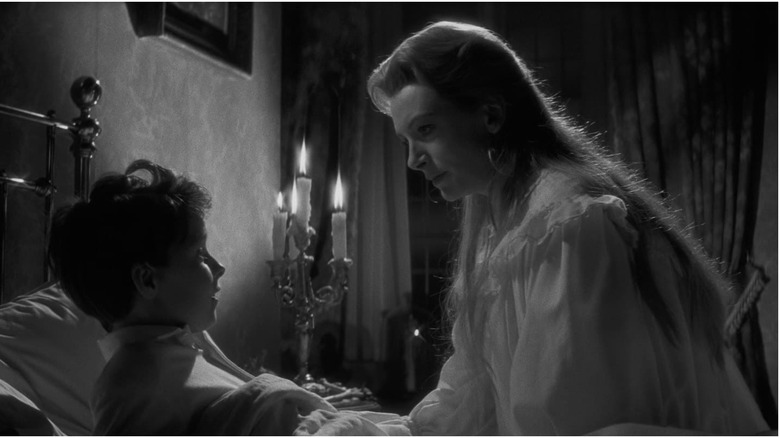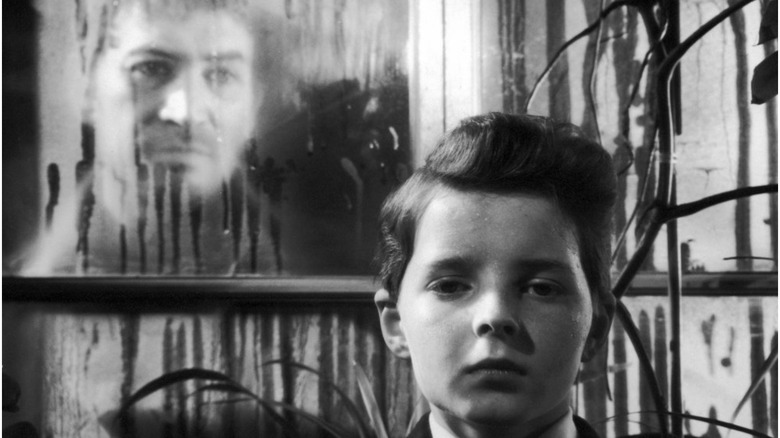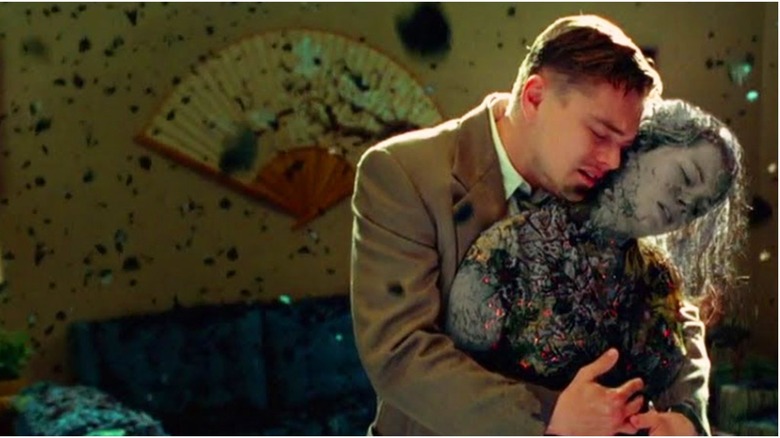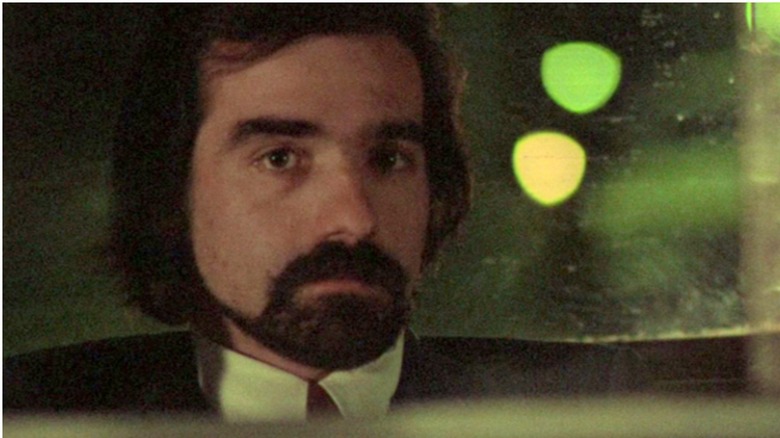Why The Innocents Is One Of Martin Scorsese's Favorite Horror Films
Martin Scorsese isn't just an amazing director — he's an incredible film historian. Now that Peter Bogdanovich has left us, there may be no living man who knows more about movies than Scorsese does. Indeed, reading or listening to Scorsese talk about movies is often just as joyful and enlightening an experience as watching one of his films. His list of his 11 favorite horror films, compiled in The Daily Beast for Halloween 2015, peels back Scorsese's thoughts on a genre that he himself has not often worked in. And his number 10 pick is Jack Clayton's 1961 film, "The Innocents."
Scorsese turns the screw
Scorsese's list features classics like Robert Wise's "The Haunting" at number one, and some more obscure picks, like Val Lewton's "Isle Of The Dead" at number two. Considering Scorsese's Catholic upbringing, it shouldn't surprising that "The Exorcist" comes in at number eight. So, what is it that earns "The Innocents" a place on the list?
"This Jack Clayton adaptation of 'The Turn of the Screw' is one of the rare pictures that does justice to Henry James," wrote Scorsese. "It's beautifully crafted and acted, immaculately shot (by Freddie Francis), and very scary." Scorsese's review may be brief, but it still highlights some points of interest. One is his opening reference to the film's source material, "The Turn of the Screw," which helps contextualize the power of "The Innocents."
"The Turn Of The Screw" was serialized in Collier's Weekly from January to April 1898, and packaged as a novella in October that year. The story takes place at the British Bly estate and is recounted in the form of a journal left by a former governess. The governess, assigned to watch over two children, Miles and Flora, came to believe the grounds were haunted. 124 years on, the work has been adapted to film and television numerous times, most recently as the 2019 Netflix mini-series "The Haunting Of Bly Manor." Even as other adaptations fade from memory, "The Innocents" endures. Let's dig into why.
The death of innocents
One reason for the lasting horror of "The Innocents" is ambiguity. The film never reveals if there really is something supernatural afoot at Bly Manor or if the governess, named Miss Giddens in the film, is hallucinating apparitions. This approach mandates a "less is more" handling of the scares and allows the audience to more easily identify with Giddens' uncertainty. Plenty of horror films gesture towards this sort of ambiguity, but usually come down on one side by the film's end. "The Innocents" never does and is all the scarier for it.
What cements the film's mood is crisp, luscious black and white photography (shot in CinemaScope). Exterior wide shots on the grounds of the Bly estate and shadow cloaked interiors are equally remarkable. However, the classical framing underpins the lurid subject matter. One interpretation is that Giddens' repressed sexuality is affecting her behavior. At times, her interest in the 11-year old Miles seems to be of more predatory than motherly concern. In the film's closing moments, after Miles' death, she kisses his lifeless body. Since "The Innocents" takes place in Victorian-era England, a society all about chastity and repression, the movie's filmmaking style mirrors the reality of its setting.
This mix of the classical and the perverse is reminiscent of "Psycho," another Scorsese favorite. The difference is that "The Innocents" is more concerned with mood than the thrills Hitchcock delighted in.
Scorsese's own horror film
Scorsese's reputation for making gangster movies obscures his diverse filmography; he's directed religious epics like "The Last Temptation of Christ," costume dramas like "The Age of Innocence," and comedies like "After Hours." However, Scorsese has only wet his toes when it comes to horror. The closest he has come to making a straight-up horror movie was his remake of "Cape Fear," but his 2010 adaptation of Dennis Lehane's novel "Shutter Island" is full of gothic chills. Set in 1954 in the titular island, Leonardo DiCaprio stars as Teddy Daniels, a U.S. Marshal investigating the disappearance of a patient at Ashecliffe Mental Hospital.
"Shutter Island" is both similar and crucially different from Scorsese's own favorite horror films. Unlike "The Innocents" or "Psycho," "Shutter Island" is in color, and Robert Richardson's cinematography boasts an incredible palette. Even so, the film drips with atmosphere rivaling that of Clayton and Hitchcock. Like "The Innocents," "Shutter Island" also uses its often empty setting to maximize dread.
Where "Shutter Island" falls short is the narrative. Whereas "The Innocents" refuses to commit to a definitive explanation, the third act of "Shutter Island" explains things in exhausting detail. On a rewatch, even the film's most surreal moments take on a single concrete meaning, whereas "The Innocents" remain a Rorschach test for its viewer no matter how times you absorb it. Now, this is a sin of the script and the source material; Lehane's background as a mystery writer winds up undermining the horror of his story. Still, "Shutter Island" would've done better to take more inspiration from "The Innocents" than from "Psycho," another film suffocated by an exposition dump of an ending.
Martin Scorsese: film critic
Enthusiasm is the common ingredient in Scorsese's films. His love for filmmaking has not dulled a bit as he's aged, and even his lesser films never feel phoned in. It would've been easy for a director to dismiss "Shutter Island" thanks to its pulp trappings, but Scorsese commits and gives the story the best possible telling it could have. Daniels' dream sequences of his deceased wife Dolores (Michelle Williams) are some of the most haunting scenes in any Scorsese film. His passion is just as obvious when he's talking about films instead of directing them. In another life, Scorsese could've been a film critic to rival the best, from Roger Ebert to Pauline Kael. The list of his favorite horror films gives us a glimpse of that alternate world.
Looking across Scorsese's list, it becomes clear what types of horror movies he enjoys and what scares him. Repeated attributes on the list include black and white photography, light gore, tight suspense, and a gothic atmosphere. "The Haunting," "Psycho," and of course "The Innocents" fit the bill on all counts.
